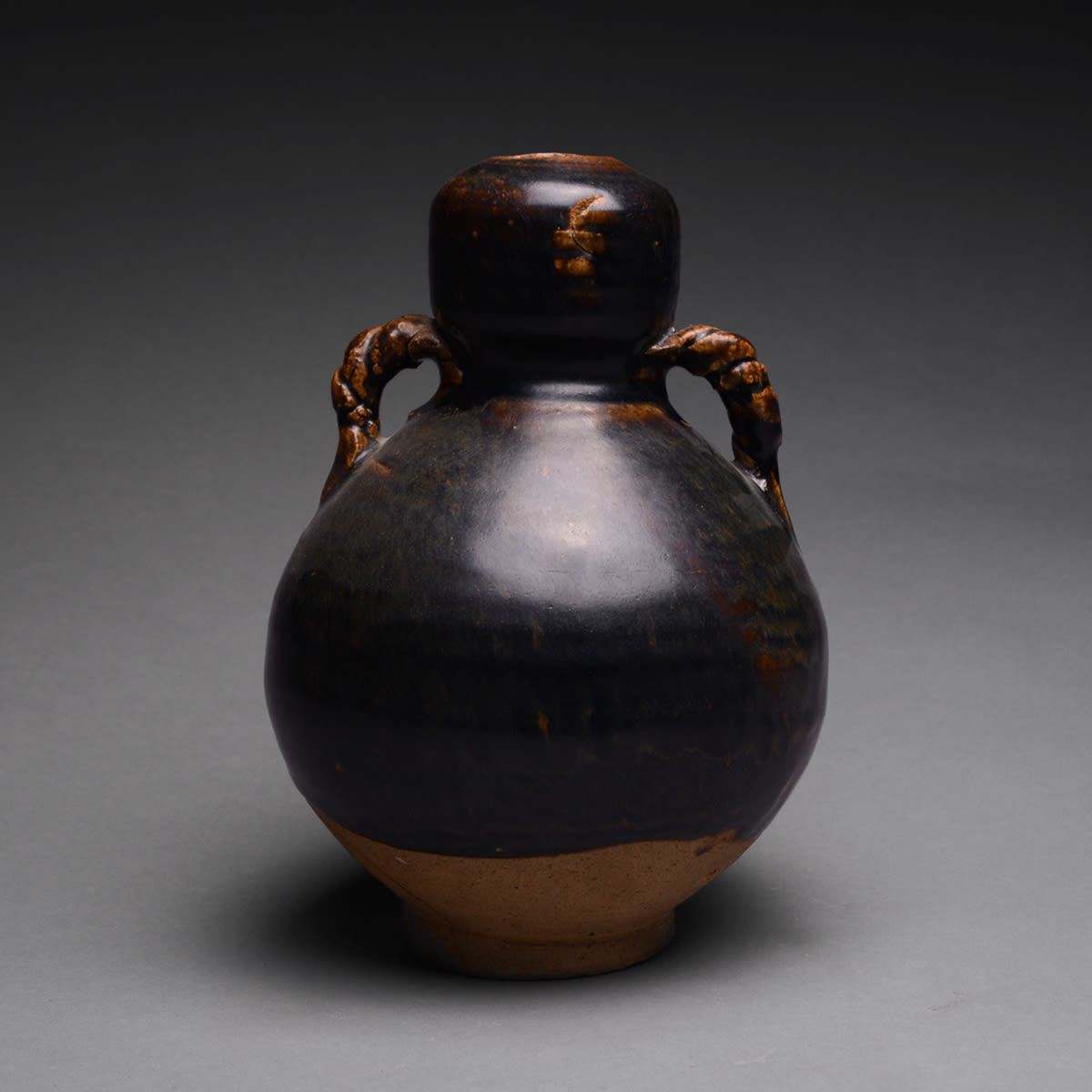Song Brown-Glazed Terracotta Vase, 960 CE - 1279 CE
Glazed-Terracotta
height 20.3 cm
height 8 in
height 8 in
H.612
Further images
This gorgeous vessel, covered in a dark brown glaze, feature two twisted handles that connect the join of the bulbous neck and shoulders to the body. The classical shape is...
This gorgeous vessel, covered in a dark brown glaze, feature two twisted handles that connect the join of the bulbous neck and shoulders to the body. The classical shape is a type still seen today in rice-wine vases throughout China and Japan. Most likely, this vessel served the same function in its own day. The short-lived Song (also spelled Sung) Dynasty partially reunified the country after a period of turmoil following the fall of the T’ang. Historically, the Song are noted for their revival of the ancient Confucian beliefs, ushering a period known as Neo-Confusianism that would dominate Chinese (and later on Japanese) thought for the next several centuries. Although best known for their philosophical contributions, this vase attests to the rich artistic tradition that flourished under the enlightened rulers of the Song Dynasty. The rich brown glaze is astounding not for its uniformity, but for its subtle variations of hue. The beige of the clay seeps through in portions where the glaze settled more thinly appearing almost violet in color. The beauty of this vessel is timeless. A true classic, it would appear as equally striking resting on a table in a modern home or being passed around during a Song Dynasty ceremonial feast. This vase symbolizes the joys of life: drinking, celebrating with friends, art, and appreciation of beauty. More than a relic, this vase is a reminder of all we share with the past, reminding us that our modern culture is deeply rooted in the traditions and cultures of those who came before us.





